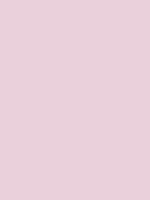#e9d0da Color Information
In a RGB color space, hex #e9d0da is composed of 91.4% red, 81.6% green and 85.5% blue. Whereas in a CMYK color space, it is composed of 0% cyan, 10.7% magenta, 6.4% yellow and 8.6% black. It has a hue angle of 336 degrees, a saturation of 36.2% and a lightness of 86.5%. #e9d0da color hex could be obtained by blending #ffffff with #d3a1b5. Closest websafe color is: #ffcccc.
-
- R 91
- G 82
- B 85
-
- C 0
- M 11
- Y 6
- K 9
● #e9d0da color description : Light grayish pink.
#e9d0da Color Conversion
The hexadecimal color #e9d0da has RGB values of R:233, G:208, B:218 and CMYK values of C:0, M:0.11, Y:0.06, K:0.09. Its decimal value is 15323354.
| Hex triplet | e9d0da | #e9d0da |
|---|---|---|
| RGB Decimal | 233, 208, 218 | rgb(233,208,218) |
| RGB Percent | 91.4, 81.6, 85.5 | rgb(91.4%,81.6%,85.5%) |
| CMYK | 0, 11, 6, 9 | |
| HSL | 336°, 36.2, 86.5 | hsl(336,36.2%,86.5%) |
| HSV (or HSB) | 336°, 10.7, 91.4 | |
| Web Safe | ffcccc | #ffcccc |
| CIE-LAB | 85.755, 10.368, -1.761 |
|---|---|
| XYZ | 68.813, 67.498, 75.729 |
| xyY | 0.325, 0.318, 67.498 |
| CIE-LCH | 85.755, 10.516, 350.361 |
| CIE-LUV | 85.755, 13.959, -4.534 |
| Hunter-Lab | 82.157, 5.732, 2.859 |
| Binary | 11101001, 11010000, 11011010 |
Color Schemes with #e9d0da
Alternatives to #e9d0da
Below, you can see some colors close to #e9d0da. Having a set of related colors can be useful if you need an inspirational alternative to your original color choice.
#e9d0da Preview
This text has a font color of #e9d0da.
<span style="color:#e9d0da;">Text here</span>This paragraph has a background color of #e9d0da.
<p style="background-color:#e9d0da;">Content here</p>This element has a border color of #e9d0da.
<div style="border:1px solid #e9d0da;">Content here</div>.text {color:#e9d0da;}.background {background-color:#e9d0da;}.border {border:1px solid #e9d0da;}Shades and Tints of #e9d0da
A shade is achieved by adding black to any pure hue, while a tint is created by mixing white to any pure color. In this example, #060304 is the darkest color, while #fcf8fa is the lightest one.
-
#060304
#060304rgb(6,3,4) -
#14090d
#14090drgb(20,9,13) -
#211017
#211017rgb(33,16,23) -
#2f1620
#2f1620rgb(47,22,32) -
#3c1c29
#3c1c29rgb(60,28,41) -
#492232
#492232rgb(73,34,50) -
#57293b
#57293brgb(87,41,59) -
#642f44
#642f44rgb(100,47,68) -
#71354d
#71354drgb(113,53,77) -
#7f3b56
#7f3b56rgb(127,59,86) -
#8c425f
#8c425frgb(140,66,95) -
#994868
#994868rgb(153,72,104) -
#a74e72
#a74e72rgb(167,78,114)
-
#b1587b
#b1587brgb(177,88,123) -
#b76586
#b76586rgb(183,101,134) -
#bd7290
#bd7290rgb(189,114,144) -
#c3809b
#c3809brgb(195,128,155) -
#ca8da5
#ca8da5rgb(202,141,165) -
#d09bb0
#d09bb0rgb(208,155,176) -
#d6a8ba
#d6a8bargb(214,168,186) -
#dcb5c5
#dcb5c5rgb(220,181,197) -
#e3c3cf
#e3c3cfrgb(227,195,207) -
#e9d0da
#e9d0dargb(233,208,218) -
#efdde5
#efdde5rgb(239,221,229) -
#f6ebef
#f6ebefrgb(246,235,239) -
#fcf8fa
#fcf8fargb(252,248,250)
Tones of #e9d0da
A tone is produced by adding gray to any pure hue. In this case, #dedbdc is the less saturated color, while #febbd6 is the most saturated one.
-
#dedbdc
#dedbdcrgb(222,219,220) -
#e1d8dc
#e1d8dcrgb(225,216,220) -
#e4d5db
#e4d5dbrgb(228,213,219) -
#e6d3db
#e6d3dbrgb(230,211,219) -
#e9d0da
#e9d0dargb(233,208,218) -
#eccdd9
#eccdd9rgb(236,205,217) -
#eecbd9
#eecbd9rgb(238,203,217) -
#f1c8d8
#f1c8d8rgb(241,200,216) -
#f4c5d8
#f4c5d8rgb(244,197,216) -
#f6c3d7
#f6c3d7rgb(246,195,215) -
#f9c0d7
#f9c0d7rgb(249,192,215) -
#fcbdd6
#fcbdd6rgb(252,189,214) -
#febbd6
#febbd6rgb(254,187,214)
Color Blindness Simulator
Below, you can see how #e9d0da is perceived by people affected by a color vision deficiency. This can be useful if you need to ensure your color combinations are accessible to color-blind users.
